8 Types of Bagels From Around the World
New York isn't the only city with these doughy rings of goodness.
Oct 13, 2022
To most Americans, bagels (well, the best ones, at least) are synonymous with New York City, but the doughy "O's" we know and love are much more than a phenomenon that extends far beyond the borders of the five boroughs. Like so many of the Big Apple's citizens, the American bagel is an immigrant with international roots that date back hundreds of years. Its predecessors and similar versions come in all shapes, sizes, textures, and tastes, with ingredients both familiar and foreign to our country's palette.
One of New York's most popular bagel brands, Davidovich Bakery, is, in fact, a first-generation outfit founded by Ukrainian immigrants who combined their family recipe for bubliks (Ukraine's version of the bagel) with prep techniques honed by NYC's masterful Jewish bakers to create a bagel praised by Time, The Wall Street Journal, Forbes, and ABC News.
Come as we explore the world's many types of bagels, with the help of author, bagel historian, and Davidovich business development director Marc Fintz.
Types of bagels
Bublik | Ukraine
The bublik is a stalwart street fare in Ukraine, Belarus, and Lithuania, sold plentifully in open markets by vendors toting dozens on strings. With a larger shape and wider hole than traditional bagels, and a slightly sweet taste attributed to the milk, butter, and eggs in its dough, bubliks have a dense and chewy texture. Fintz assigns this to the fact that they are "not boiled, nor proofed (left to sit and yeast-rise in dough form) for the 12 to 18 hours that New York bagels are." Savory versions, featuring a dash of onion juice and cheese gratings in their dough, also exist.
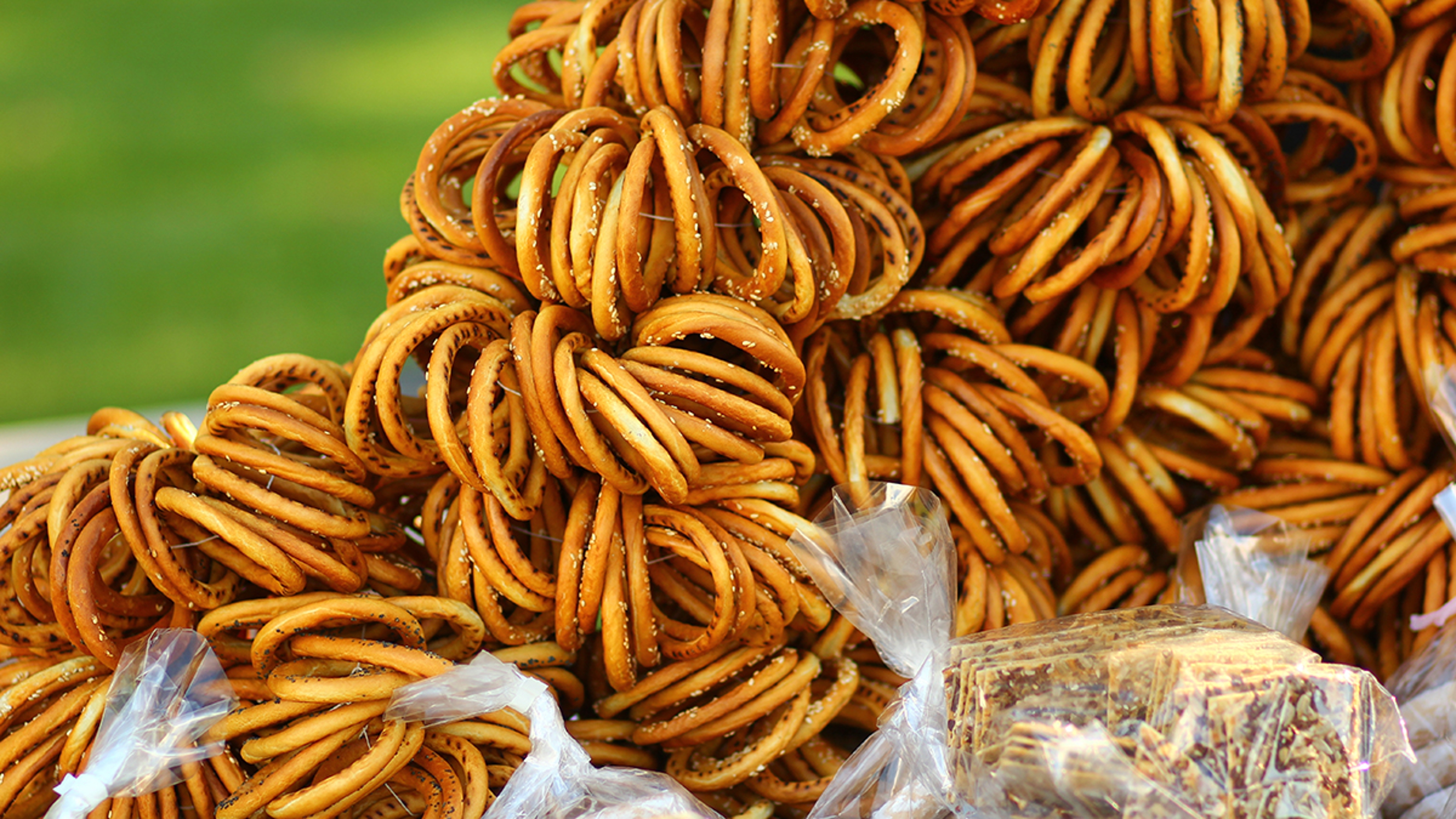
Obwarzanek | Poland
A single-serving reworking of German pretzel loaves served during the Middle Ages in European monasteries, the obwarzanek was first fashioned in 14th-century Poland. Larger than bagels (up to seven inches in diameter!), obwarzanek are boiled (and, in fact, named after "obwarzanie," the Polish term for boiling a food item) and then baked, with salt and poppy seeds sprinkled atop. Tradition finds the bread rarely toasted or sliced in half and, with a hole way too large to contain foodstuffs, never used to make sandwiches.
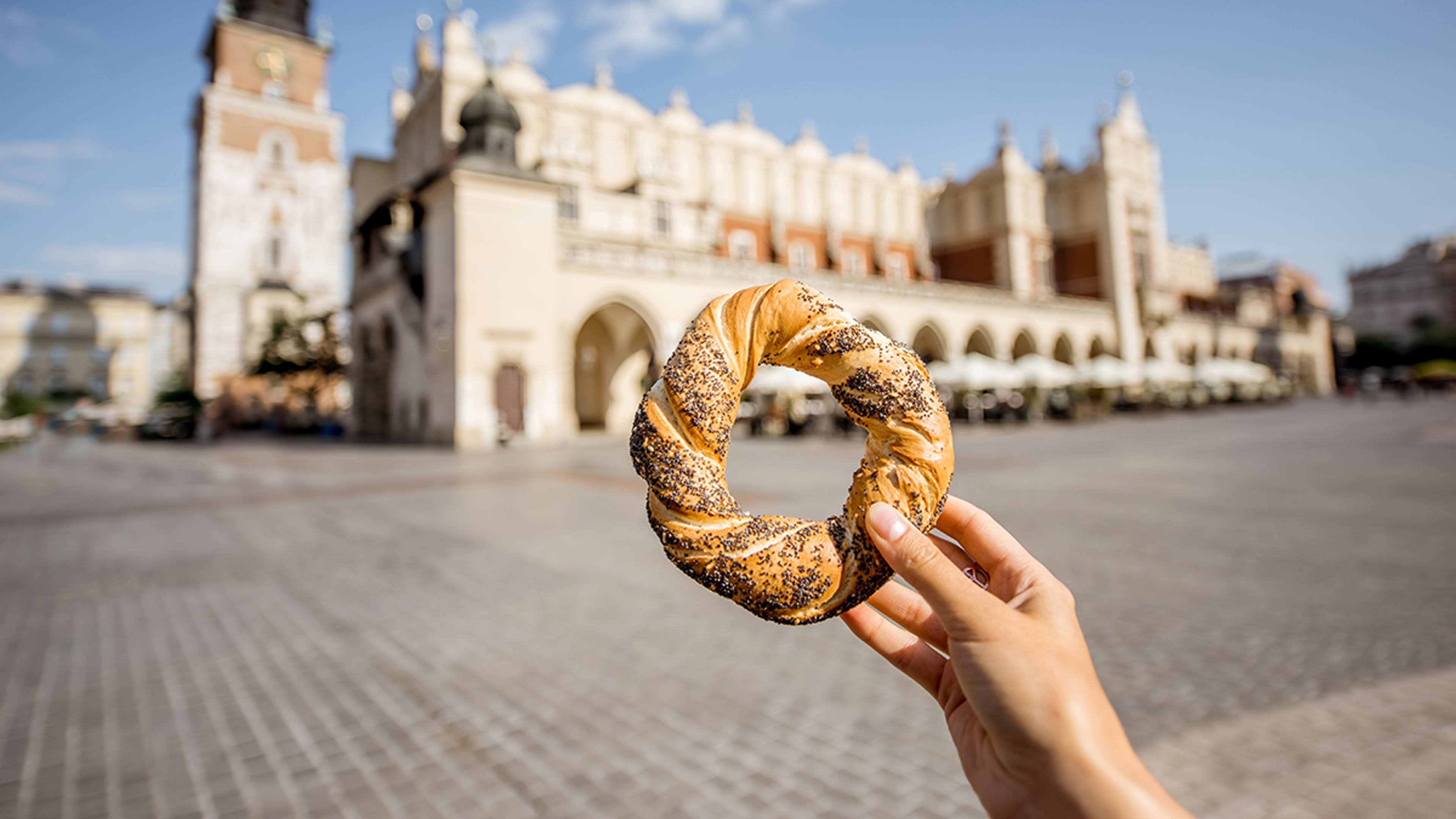
Kompyang | China
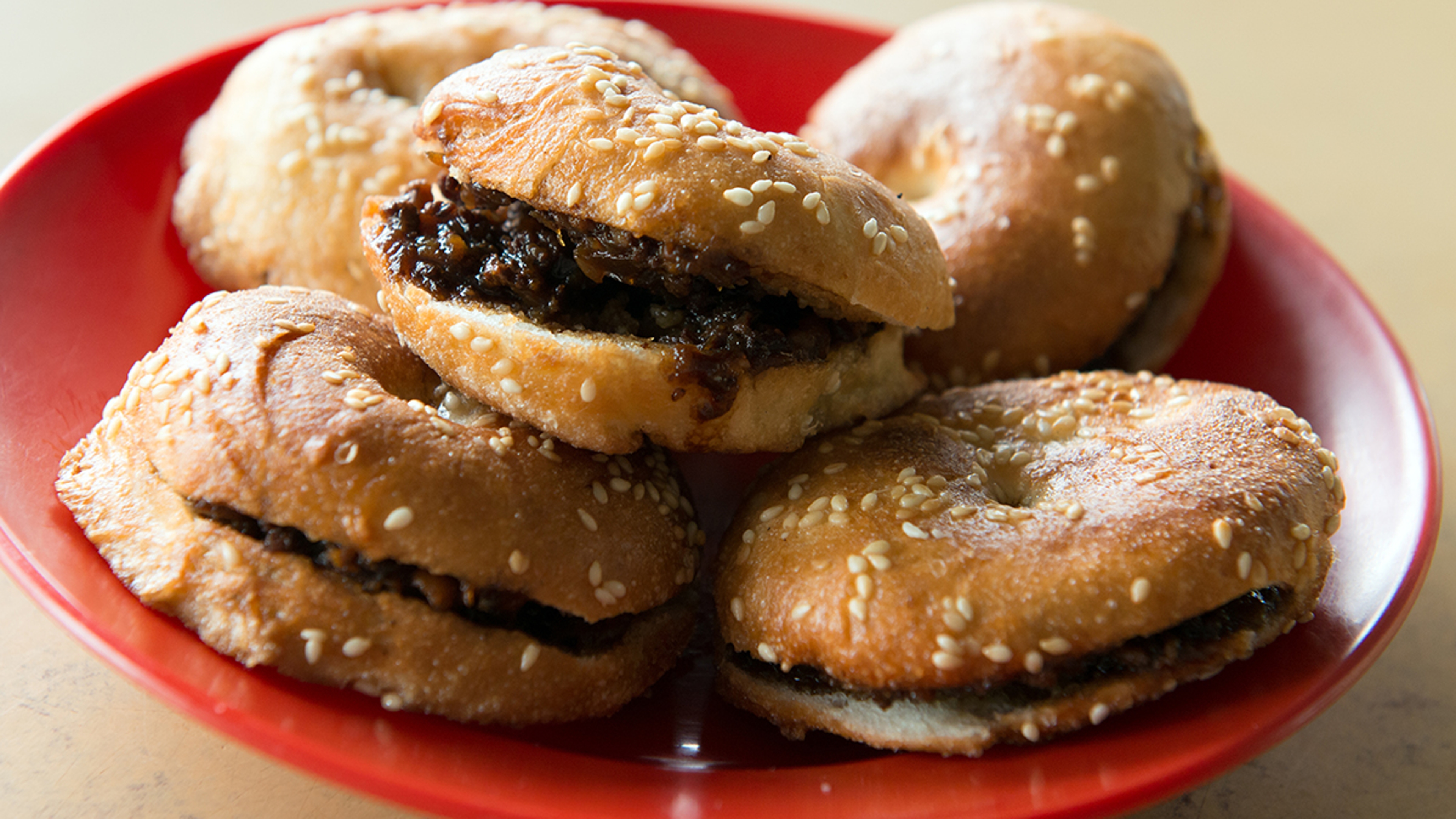
Kompyang began as a Ming Dynasty military ration, commissioned by general Qi Jiguang as a Chinese take on a sturdy and easily made battlefield food kept by Japanese pirates in the 1500s. Fintz says kompyang are baked without a primary boil and, unlike many American bagels, are far from qualifying for certain dietary rules, noting that savory versions "are often stuffed and made with pig lard, making any kosher certification impossible."
Sweet versions of kompyang — yeasty flour cakes with a Mandarin language title that translates to "conquest of the east" — substitute sugar for salt in the dough and add a generous sesame seed topping. Both versions are also known to contain onion shavings, and carry a doughy texture and taste reminiscent of Bavarian pretzels.
Bialys | Poland
A second Polish bagel cousin, the bialy is named after its city of origin, Bialystok. Found in variations modest in size (as small as three inches wide) up to sizes approaching a medium pizza, the bialy is essentially a thin-crust roll with a center indentation full of baked onions and poppy seeds.
While traditionalists swear to these toppings only and stand by a strict six-hour shelf life for bialys, average consumers don't watch the clock and find no fault in adding cream cheese, lox, cheese and lox, or simply butter. Bialy artisans skip the pre-bake boil most American bagels receive, which produces an outside with much less shine than a traditional bagel and a fluffier inside full of puffed air bubbles.
READ THE "HOLE" STORY: History of the Bagel
Jerusalem bagels | Israel
Having risen to popularity in their namesake city during the 1960s, the Jerusalem bagel is a thin, soft, and oval-shaped treat, often found to be sweet-tasting thanks to the addition of honey-treated sesame seeds. Fintz points out, "Though these look a lot like seeded bagels, they are very bread-like…and are not proofed or retarded (refrigerated overnight in dough form) like NYC bagels."
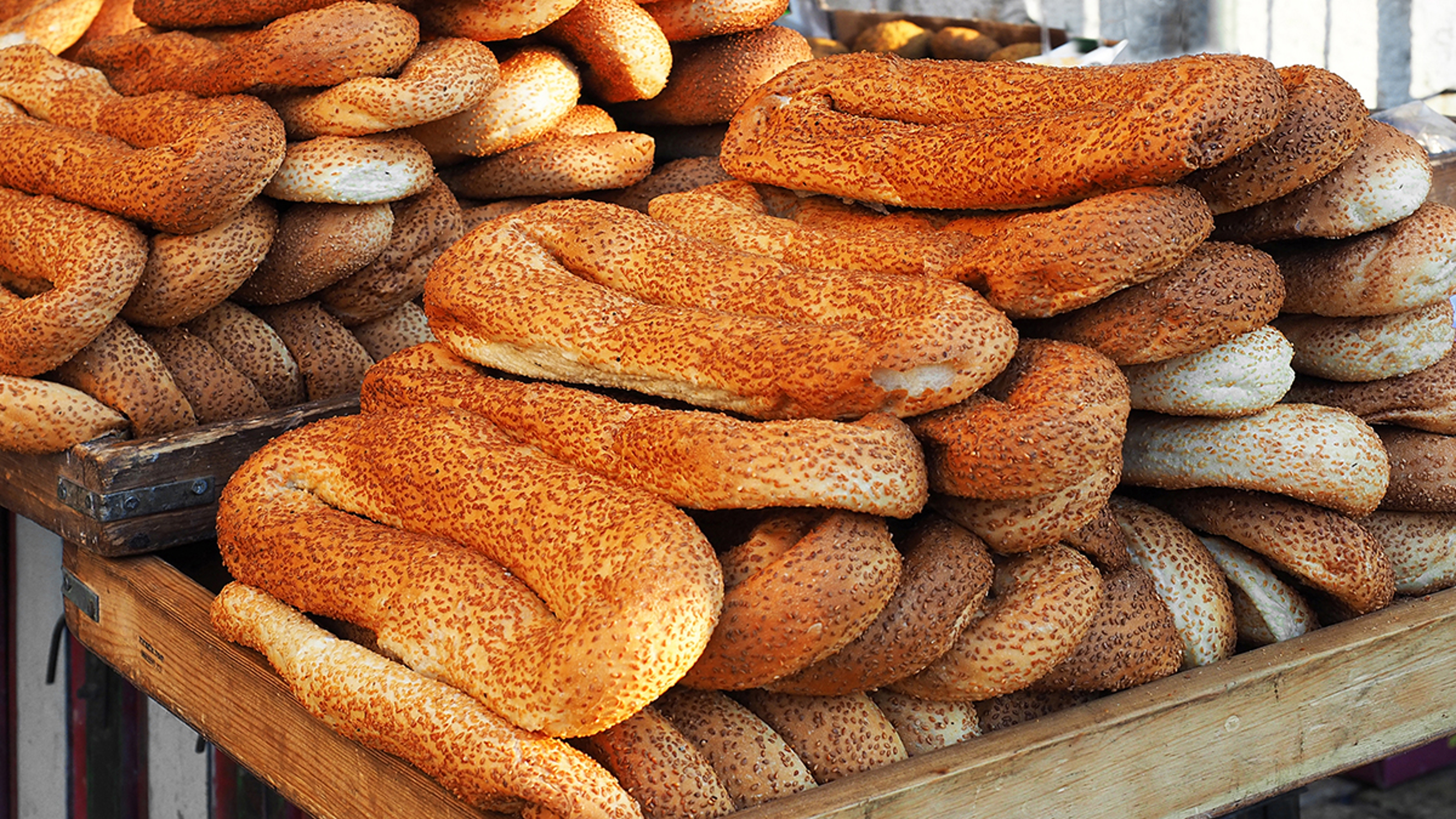
He adds, "They do contain non-dairy ingredients, but, despite coming from Israel, there is less focus on kosher status." A zesty taste sets Jerusalem bagels apart from its cousins thanks to the addition of za'atar, a strong spice blend of herbs, sumac, and salt.
Simit | Turkey
Traditionally enjoyed with a hot tea, the simit, often called a "Turkish bagel," began as a late 16th-century street food with regional variations. Istanbul simit, for example, are smoother and larger than those found in the Ankara region.
Simit carts remain a street-side staple in modern Turkish cities, as do vendors carrying high-stacked trays of simits on their heads, atop traditional fez hats.

Fintz describes the simit as "simple, and usually heavily seeded with sesame seeds, though not proofed or boiled, and often distinguished by its rolled look." Simits boast a sweet taste as well, thanks to a dip in molasses water before they enter the oven.
Montreal bagels | Canada
In 1900, Canadian bakers made quite a few tweaks to the standard American bagel profile: They substituted sugar for salt, added eggs to the dough, poached the result in honeyed water, and baked the whole thing in a wood-fired hearth. The result was the beloved Montreal bagel.
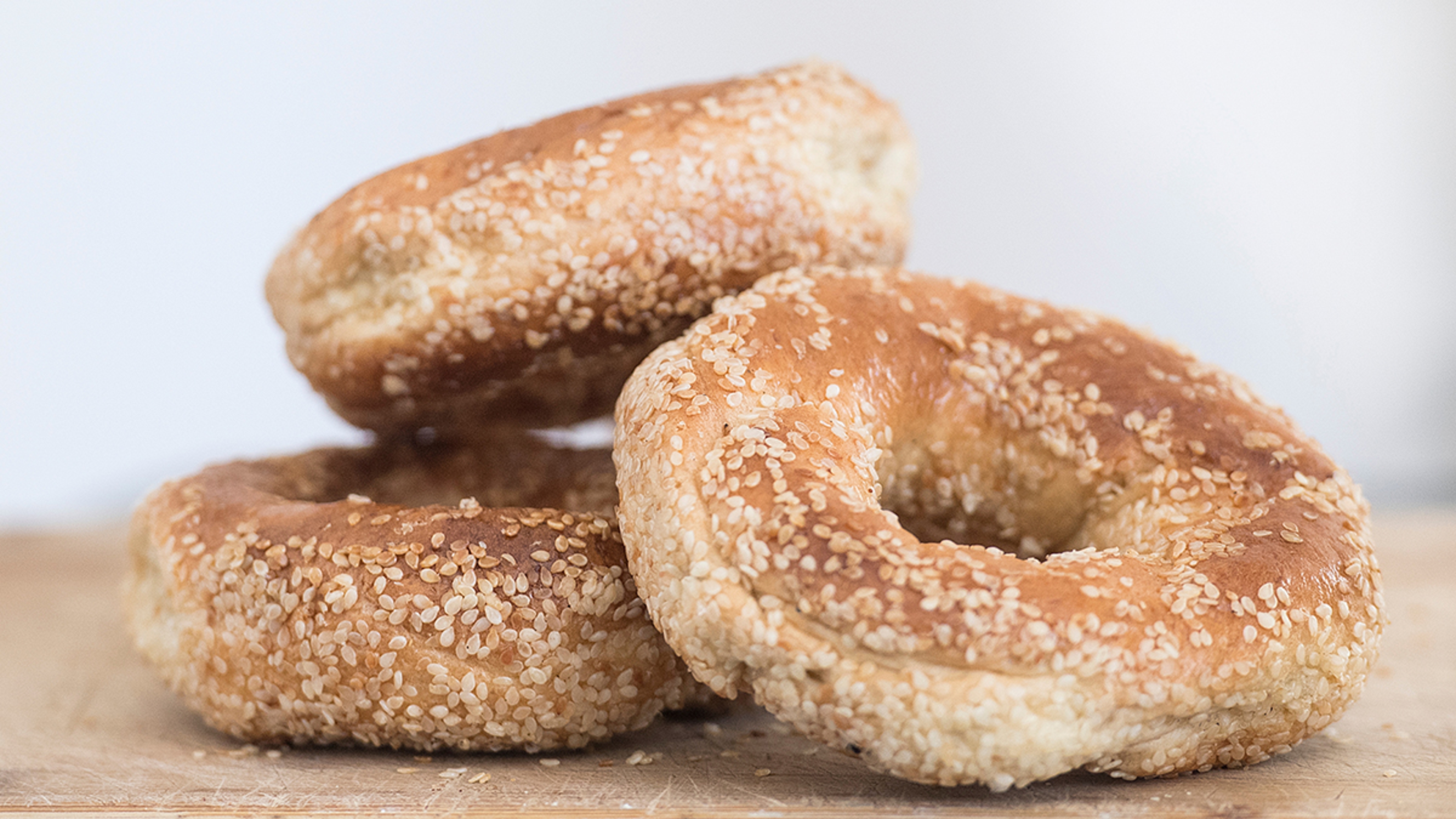
Citing the sweet crisp of its golden exterior and a distinctive chewy mouthfeel, Montreal bagel diehards tout their version as being worlds more unique than a New York-style "basic." Swearing to an even tighter shelf life than the bialy expert's six-hour limit, these enthusiasts claim the only "true" Montreal bagel comes fresh from a bakery's wood oven, and is eaten either bare or with a minimal dollop of cream cheese. Sounds like a schmear campaign to me...
Sushki | Russia
Sushki are a sweet — and typically sans topping (maybe some poppy seeds on special occasions) — sugar-water boiled bagel variant, formed to the approximate circumference of a beer bottle and sold primarily by the bagful.
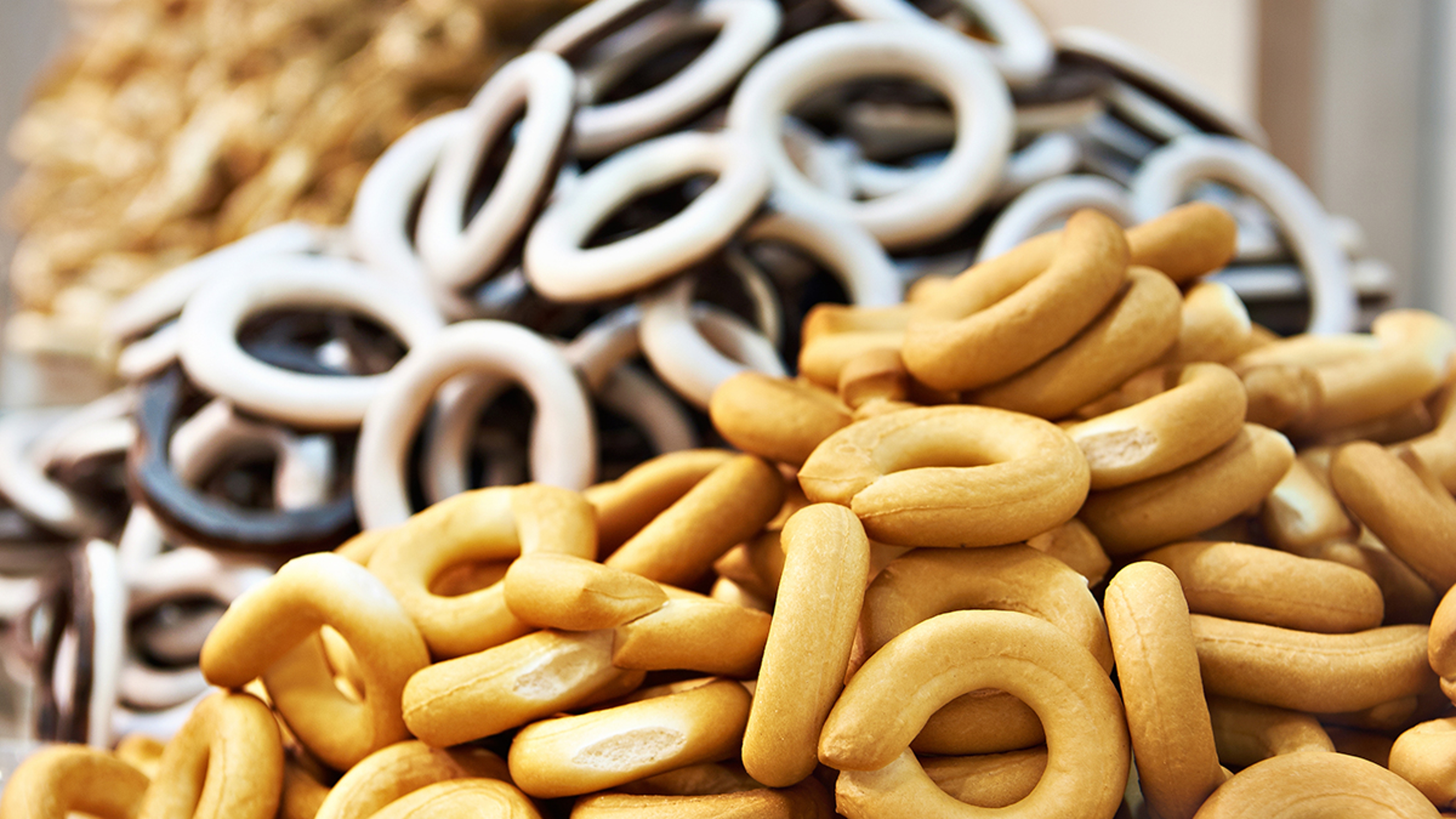
Fintz describes sushki as "much closer to American snack pretzel" than any other bagel variation. "They are not soft like a Bavarian pretzel or boiled in the manner of a NYC bagel. Their very basic ingredients and dry, crunchy texture are their prime defining traits."
.svg?q=70&width=384&auto=webp)







